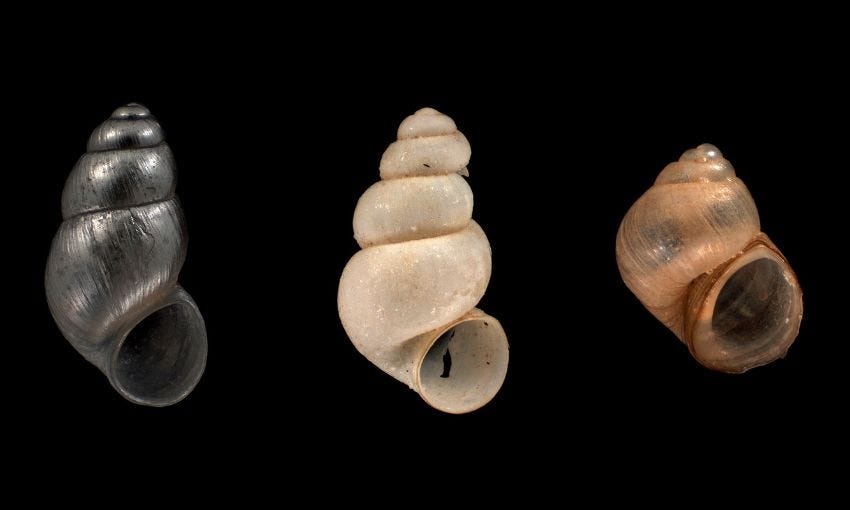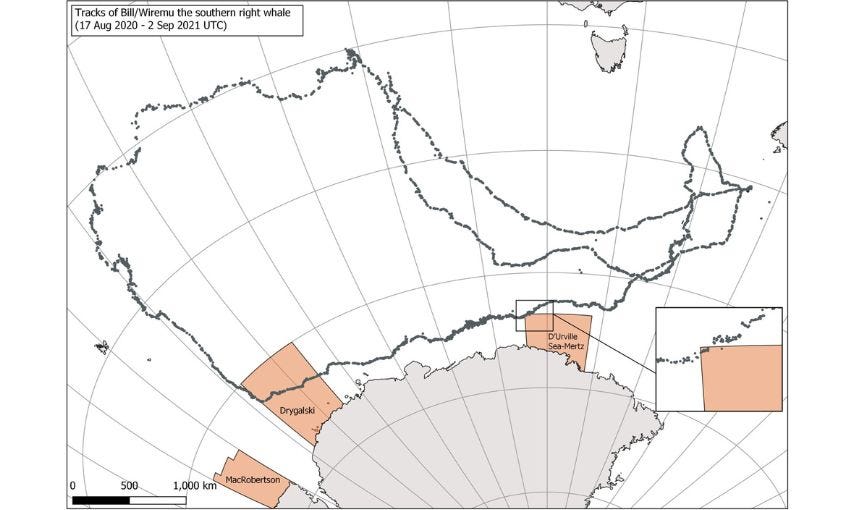Climate win in US cause for global hope
A bill just passed by the Senate to supercharge the transition to renewable energy showcases the power of political leadership.
Haere mai, welcome to Future Proof, brought to you by Electric Kiwi.
Image: Tina Tiller.
Big news out of the US this week, as the Democrats pass a sweeping bill dubbed “the boldest climate package in US history” by Senate majority leader Chuck Schumer. Al Jazeera is calling the legislation “unprecedented”. And in The Financial Times: “It turns out the planet might just have a future after all.”
So what’s in this bill?
And why does it have everyone – media, scientists, politicians – fist-pumping and sighing with relief?
It’s called the Inflation Reduction Act, but ignore the weird name and focus on this: US$369 billion to jump-start the shift away from fossil fuels and into the renewable revolution. It’s the biggest investment in clean energy in US history.
It’s predicted that the massive cash injection will bring US carbon emissions down to 40% below 2005 levels by 2030. That’s a huge step towards the 50% reduction goal that the US committed to under the Paris agreement. HUGE.
Plus, it places the US at the forefront of climate action. Finally, we’re seeing some courageous action from the world’s biggest emitter of carbon. Already, there are calls for other sizeable emitters, like the EU, to follow suit.
Action restores confidence in Paris Agreement
There will be relief among New Zealand decision makers too. Last month, climate change minister James Shaw told Newsroom he was worried that inaction in the US could fatally erode global confidence in the Paris agreement.
Well, now there’s no more room for excuses from the government: President Biden’s miraculous clean energy win is a signal for more bold political leadership on climate action.
Climate leadership needed at all political levels
It’s local election season, and with our wettest July on record just past, climate change will (and should) be front-of-mind for candidates and voters. In a special episode of The Hui this week, Mihingarangi Forbes convened a panel of three Māori candidates, who were invited to discuss issues close to their heart. It gave me hope to see that climate change – and its impact on rangatahi – made the cut.
Now, let’s hope this much-needed and long-overdue leadership from the US spurs some action here in Aotearoa.
In other news, we've drawn the winner of the Electric Kiwi year of free power for Future Proof subscribers. Massive congrats to Connor! Electric Kiwi will be in touch with you very soon.
Hope you’re staying toasty-warm during this cold snap,
Ellen.
Helping the planet with off-peak power
By moving your energy usage off-peak on Electric Kiwi’s MoveMaster plan, you can reduce your environmental impact and save money on bills. With different tariffs at different times, cheaper off-peak rates and half price power overnight, MoveMaster is perfect for EV owners and those with solar – offering a highly competitive solar buyback rate.
Peak electricity demand means more dirty generation is required, so moving some power usage to cheaper, off-peak periods is win-win for you and the planet!
Visit the Electric Kiwi website here to learn more.
Yes, we knew about climate change 110 years ago
A 1912 classic from the Rodney & Otamatea Times is doing the rounds again on social media, six years after it first went viral. Yes, it’s legit. The Spinoff’s editor-at-large Toby Manhire has the story-behind-the-story. Turns out this prescient article, titled ‘Coal consumption affecting climate’, originally came from the US magazine Popular Mechanics and also appeared in the Braidwood Dispatch and Mining Journal in Australia. So why did the version from a tiny New Zealand newspaper go viral? I happen to know the provenance of the specific image that keeps lighting up social media. A local history enthusiast from Leigh in the Rodney district, Jo Evans, found it, framed it and gifted it to Dr Sam McGlennon, the partner of his daughter (science writer Kate Evans). At the time, McGlennon was working for the Sustainable Business Network, who chucked the photo up online. There you have it: 110-year-old news, direct from Rodney to the world.
Data deficient species more likely to be at risk of extinction
As a self-confessed nature nerd, I was saddened – but not surprised – to read that overlooked and underappreciated species are facing increased risk of extinction, according to a new study. Researchers analysed the Red List – a list of endangered species compiled by the International Union for the Conservation of Nature (IUCN). On the Red List, some species have been “assessed”, which means we have lots of data and information about how many individuals are left, and where they live. Other species have very little known about them – they are “data deficient”. For policy makers who use the Red List to make conservation decisions, “data deficient” was often assumed to mean “doing OK”. But this study predicted that more than half of the 7,699 “data deficient” species analysed are threatened with extinction, while only 28% of the “assessed” species are in trouble.
Three data deficient freshwater snail species: Opacuincola turriformis, O. geometrica, and O. conosimilis. Credit: Te Papa (CC BY 4.0).
I trawled through the Excel spreadsheet of “data deficient but probably threatened” species and found a few from New Zealand, including 17 species of freshwater snail that are only found here, the bootlace hagfish (which has only been seen twice), and a flounder that prefers to hang out in freshwater rather than salt.
According to our own New Zealand Threat Classification System, we have nearly 5,000 species classed as “data deficient”. Not all of these will be threatened with extinction – but the point is, we just don’t know! There are all these amazing species out there with fascinating lives and habits and superpowers, and we have no idea. We don’t know about nearly 500 of our spider species. I’m a nosy neighbour – I’d love to know how many spiders are out there, and what they’re up to.
Regenerating underwater meadows to store carbon
The first time I saw a subtidal seagrass meadow, a wavering plain of literal grass growing on the ocean floor, I was delighted. I was snorkelling in a bay on Ahuahu Great Mercury Island, one of the few places in Aotearoa where you can still experience the magnificence of this rare habitat.
So I’m stoked that scientists from the Cawthron Institute are sowing seeds for a seagrass restoration project, after discovering that New Zealand’s seagrass species do indeed have flowers, they’re just teeny tiny. Seagrass meadows are carbon storage superheroes, in some cases capturing carbon up to 27 times faster than forest on land. Of course, seagrass grows best when water isn’t murky with run-off, so, how about sorting out our sedimentation problems so our seagrass can thrive, too?
If you love The Spinoff, our newsletters are a great way to stay connected to what we’re about. We publish a range of great newsletters including our daily news digest, The Bulletin, ones on specific topics like business (Stocktake) and food (The Boil Up), as well as our wraps of our best work The Spinoff Daily and The Weekend.
Like what you’ve read today? Share Future Proof with friends, family and colleagues.
This essay about Antarctica and sea level rise will make you feel things
Dr Rebecca Priestley, a historian of science and writer of clever things, really captures the climate mood in this piece for Griffith Review’s special Antarctic issue ‘Real Cool World’. Priestley has visited the great icy continent several times, and has spent a lot of time conversing with the scientists who study it. But this piece is more memoir, reflections on the general state of it all, infused with hints of science. I laughed with wry amusement. I sighed in disappointment. I nodded vigorously in agreement. Highly recommended.
The Living Laboratory is pressing ‘fast-forward’ on native ngahere restoration
When it comes to carbon sequestration, our native rākau are at a bit of a disadvantage – they’re slower growing compared to the live-fast-die-young Pinus radiata. But researchers at the AUT Living Laboratory, in collaboration with iwi, are investigating the best mix of native species to revegetate different types of farmland. Claire Concannon, producer of RNZ’s Our Changing World, visits the Living Laboratory’s first site with Ngāti Whātua Ōrākei to see the project in action.
Why Wellington’s ‘Big One’ might by a tsunami, not an earthquake
In the last decade or so, our assumptions about earthquake risk in Wellington have shifted, writes Stuff’s national correspondent Charlie Mitchell. Instead of a sharp, shallow jolt beneath the city like the Christchurch 2011 event, researchers are now more worried about a big deep earthquake off the coast – more akin to what happened near Japan in 2011 – which could send a devastating tsunami Wellington’s way.
Should you worry about the supervolcano under Lake Taupō?
Speaking of “big ones”, I mentioned in the last edition that there have been some minor rumblings under Lake Taupō recently. The folks at Otago Geology have created a one-minute animation to visualise these earthquakes. Plus, seismologist Dr Finn Illsley-Kemp was on RNZ’s Nine to Noon this week, chatting about observations of Lake Taupō over the last 40 years, and setting the record straight on what we can expect from the caldera supervolcano in our lifetimes.
To end this edition, please enjoy this self portrait by tohora/southern right whale Bill/Wiremu. He drew a whale with his satellite tracked journey across the Southern Ocean! Kia kaha Wiremu. I hope you find lots of tasty krill.
Got some feedback about Future Proof or topics you’d like covered? Get in touch with me at futureproof@thespinoff.co.nz
















